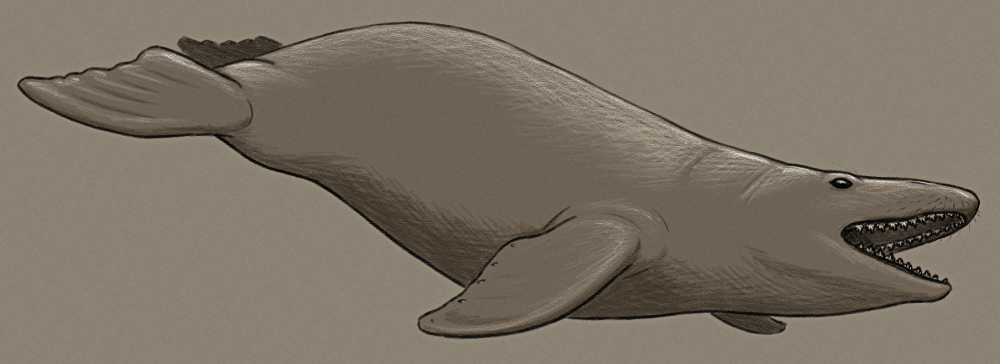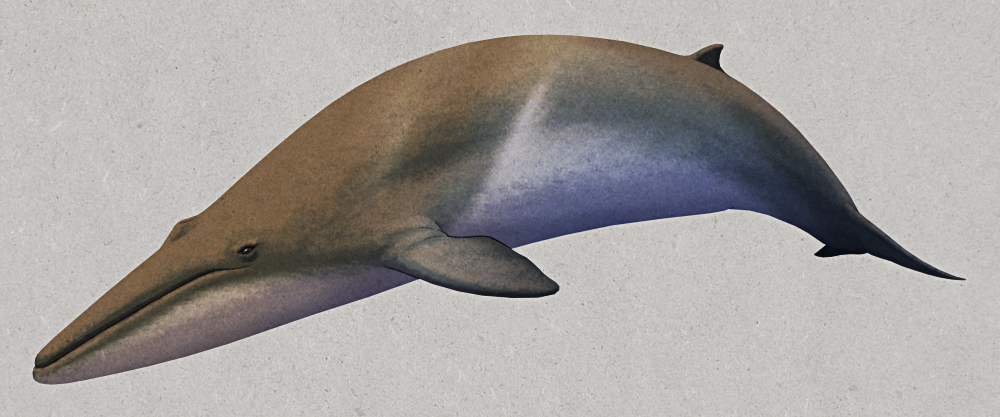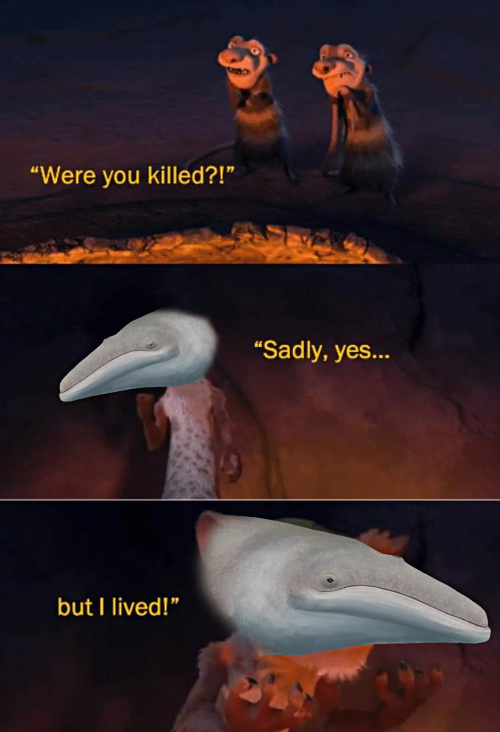Admantus asked for a “freshwater baleen whale”:

Rostrorutellum admantusi is descended from small cetotheres that became isolated in a large inland body of water (similar to the modern Caspian Sea), eventually becoming landlocked and gradually reducing in salinity towards fully freshwater.
Highly dwarfed in size, just 2-3m long (~6’6″-9’10”), they’re slow swimmers with broad duck-like snouts that are used to scoop up mouthfuls of sediment and strain out their invertebrate prey in a similar feeding style to gray whales.
Due to the murkiness of the water, and the lack of large predators in their environment, they have poor eyesight and instead use sensory bristles and electroreceptors around their snouts to navigate and detect prey.
And an anonymous submission requested a “whale-like filter-feeding marine crocodile”:

Sestrosuchus aigialus is a 6m long (~20′) crocodilian closely related to the modern American crocodile, living in warm shallow coastal waters.
It’s adapted for an almost fully aquatic lifestyle convergently similar to the ancient thalattosuchians, swimming with undulations of its long tail and steering with flipper-like limbs. But unlike other crocs it’s specialized for filter-feeding, with numerous delicate needle-like teeth in its jaws that interlock to sieve out small fish and planktonic invertebrates from the water.
A couple more suggestions also asked for “fully aquatic pinnipeds” and “future crabeater seal evolution”:

Euphausiolethrus volucer is a fully aquatic descendant of the crabeater seal. About 5m long (~16’4″), it occupies the ecological niche of a small baleen whale in the krill-abundant Antarctic waters that lack most actual baleen whales.
Its jaws contain numerous finely-lobed teeth that are used to strain krill from the water, and it utilizes all four of its wing-like flippers to swim in an “underwater flight” motion similar to that of plesiosaurs.
Highly social, it tends to congregate in pods that cooperate to herd swarms of krill for easier feeding.


